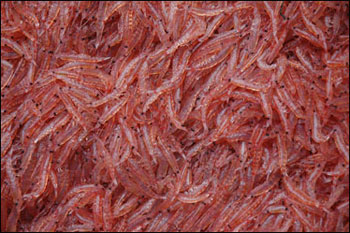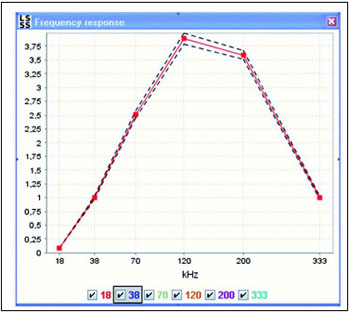Abundant krill in Southern Ocean
Published: November 20, 2008
By: Institute of Marine Research news

“G.O. Sars” left Bergen on 15 November 2007, and returned on 12 May 2008. Projects were carried out both on the way south and the way north, but in the Southern Ocean the main focus was on the AKES project. AKES stands for “Antarctic Krill Ecosystem Studies”. The AKES project started in Montevideo, Uruguay, just after New Year, and ended in Walvis Bay, Namibia, at the end of March. The distance travelled was equivalent to almost half way round the earth. The first part of the mission went via the Falklands Islands to South Georgia, before continuing east and south to almost 60 degrees south. From there the vessel headed north again along the 0 meridian to Bouvet Island and on to Cape Town in South Africa. The second part of the AKES project saw the vessel head roughly due south to the Astrid Ridge near Dronning Maud Land, before returning north further west, with a detour to Bouvet Island.
The AKES project has several goals: Mapping the acoustic properties, target strength, biology, ecology and behaviour of Antarctic krill (Euphausia superba). Mapping the acoustic properties and target strength of mackerel icefish (Champsocephalus gunnari). Ascertaining the distribution and quantity of krill in relation to the distribution of birds and fur seals by Bouvet Island. Learning more about the pelagic ecosystem. This study of the Southern Ocean also provides a basis for comparing the Arctic ecosystem with the Antarctic one.
Target strength and acoustic surveys
Antarctic krill are only found in waters that are colder than 2–3ºC. Around South Georgia, around Bouvet Island and south towards Dronning Maud Land we at times observed high densities of krill. In order to perform stock assessments using echo sounders, it is essential to know the target strength of the species. The target strength (TS) is the average echo from a single animal, but measured thousands of times.

The echo produced by an animal depends on its position in the water, i.e. at what angle the echo sounder hits it, but also on its physiology, fat content and size. In order to ascertain the target strength of krill and mackerel icefish, we used the echo sounders on “G.O. Sars” and various observation platforms that were put into the ocean. A stereo camera took pictures of how the krill and other animals were distributed in relation to the horizontal plane. All of the echo sounder frequencies on “G.O. Sars” (18, 38, 70, 120, 200 and 333 kHz) were used to study the acoustic properties of the krill and mackerel icefish. The multi-frequency response from the krill was very characteristic, and helped greatly with identifying the krill’s echo readings.
Pelagic ecosystem
Apart from the three icefish species that we found off South Georgia, Champsoce- phalus gunnari, Chaenocephalus aceratus and Pseudochaenichthys georgianus, no large species of fish were observed. It appears that the krill in the Southern Ocean cover both the role of plankton and several of the roles played by the large pelagic fish populations (such as capelin, Arctic cod and herring) in northern waters. We studied the ecosystem from the surface down to 850 metres below sea level. The big fish are deeper than that. The toothfish, for example, which is fished commercially and can weigh up to 150 kg and measure almost two metres, is found at depths of at least 1200 metres. Icefish lack the pigment haemoglobin, which makes blood red and binds oxygen, and their gills are therefore white. Icefish are found both around South Georgia, where they are commercially fished, and by Bouvet Island. They are found on the continental shelf down to depths of 400-500 metres. Apart from them we mainly caught small species such as Myctophidae (lanternfishes), Bathylagidae (deepsea smelts) and Stomiidae (scaly dragonfishes). Both the lanternfishes and deepsea smelts have light organs, and the latter even have a light at the end of their barbels. In total 82 species from 29 families of fish were caught during the two stages of the AKES mission in the Southern Ocean.
By Svein A. Iversen and Kjartan Mæstad
Institute of Marine Research
Source
Institute of Marine Research newsRelated topics:
Recommend
Comment
Share

Would you like to discuss another topic? Create a new post to engage with experts in the community.



